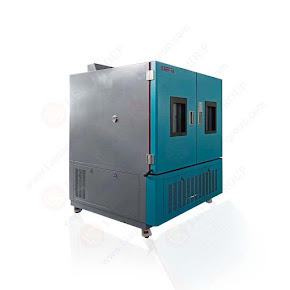What is a thermal shock test chamber?
.jpg)
A thermal shock test chamber is a specific kind of environmental chamber that is intended to replicate rapid and severe temperature shifts for the purpose of testing materials. This test is used to evaluate the capacity of electrical or mechanical components and finished products to tolerate a sudden change in temperature, either from high to low or vice versa. It is usual practice to put electronic items through a thermal shock test in order to assess their dependability and durability, particularly with regard to those products that are used in severe outdoor situations. In most cases, the thermal shock test chamber is divided into two distinct sections: one for high temperature, and another for low temperature. The sample to be tested is then put on a fixture that is capable of being quickly moved from one chamber to another. The sample is brought to a high temperature for a predetermined amount of time before being transferred straight into the low temperature chamber, which mar...
